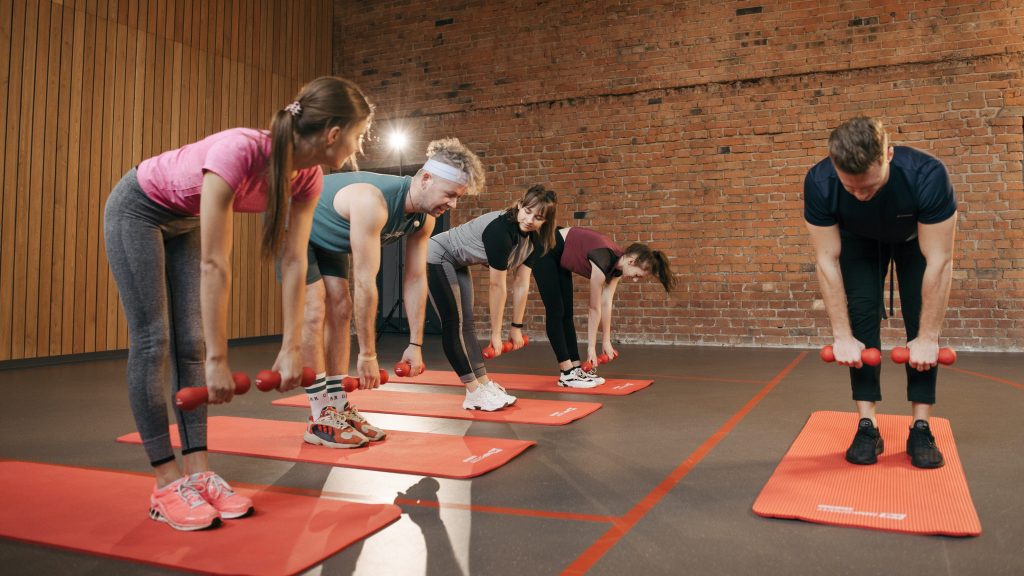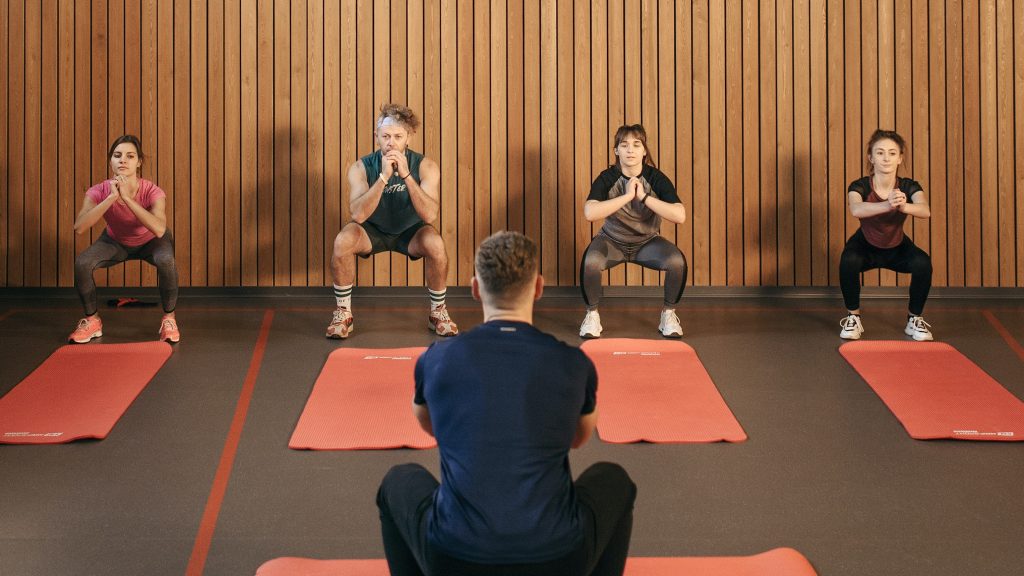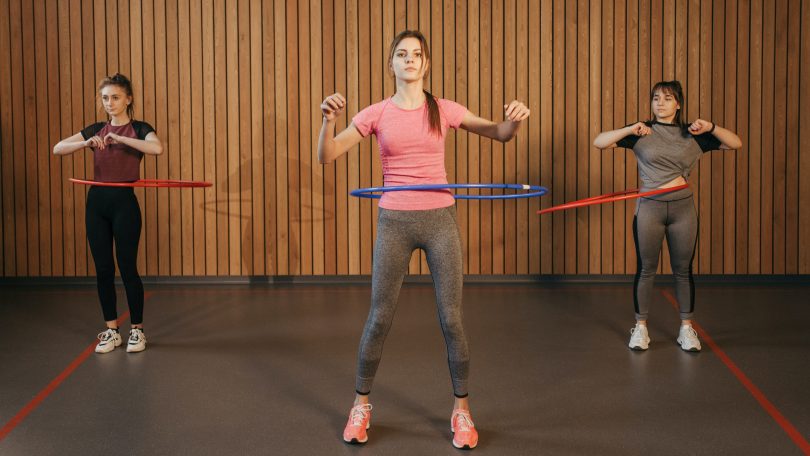Introduction:
Welcome to our website, where we explore the benefits and importance of group workout seasons for beginners. In this post “Building Strength Together: Discover the Power of Group Workout Seasons for Beginners”, we will delve into the various ways in which group workouts can empower individuals, foster a sense of community, and help beginners achieve their fitness goals. Whether you’re looking to lose weight, build muscle, or improve overall fitness, joining a group workout season can be a game-changer. Let’s dive in!
-
Define Group Workout Seasons:
Group workout seasons refer to a structured fitness program designed for beginners that incorporates group exercise classes, expert guidance, and a supportive community. These seasons typically span a fixed duration, ranging from a few weeks to several months, and aim to provide participants with a well-rounded fitness experience.
-
Benefits of Group Workout Seasons for Beginners:
a. Motivation and Accountability: Joining a group workout season helps beginners stay motivated and accountable. The camaraderie and shared goals within the group encourage participants to push their limits and maintain consistency.
b. Expert Guidance: Seasoned fitness trainers and instructors lead group workouts, providing valuable guidance on proper form, technique, and modifications for beginners. This professional support ensures safety and maximizes results.
c. Social Support and Community: Group workouts foster a sense of belonging and social support among participants. Engaging with like-minded individuals who share similar goals creates a supportive network that encourages perseverance and celebrates achievements.
d. Variety and Fun: Group workout seasons often offer a diverse range of exercises and classes, such as strength training, cardio workouts, yoga, and more. This variety keeps beginners engaged, prevents boredom, and makes the fitness journey enjoyable.
e. Healthy Competition: Friendly competition within the group can motivate beginners to challenge themselves and push harder during workouts, ultimately leading to improved performance and results.
-
Steps to Join a Group Workout Season:
a. Research and Choose a Program: Look for local fitness centers, gyms, or community organizations that offer group workout seasons for beginners. Read reviews, check qualifications of trainers, and select a program that aligns with your goals and preferences.
b. Register and Set Goals: Enroll in the chosen group workout season and set specific, achievable goals for yourself. Whether it’s losing weight, gaining strength, or improving overall fitness, having well-defined goals will help you stay focused throughout the season.
c. Attend Orientation and Assessments: Most group workout seasons begin with an orientation session where you’ll learn about the program structure, meet fellow participants, and undergo initial fitness assessments to determine your starting point.
d. Participate and Engage: Fully commit to attending the group workouts and actively enw participants. Encourage and suppgage with your felloort each other, share experiences, and celebrate milestones together. The sense of unity will motivate and inspire you throughout the season.
e. Track Progress and Adjust: Keep track of your progress by measuring metrics like weight, body measurements, and performance improvements. Regularly assess your goals and make necessary adjustments to your workout routine or nutrition plan to optimize results.
-
Choosing the Right Group Workout Season:
a. Consider your fitness level: Look for group workout seasons specifically designed for beginners to ensure the exercises and intensity are appropriate for your current fitness level.
b. Class schedule and location: Opt for a program that offers classes at convenient times and a location that is easily accessible to you. This will make it easier to stay consistent and committed.
c. Consider your interests: If you have specific fitness interests such as dancing, martial arts, or cycling, look for group workout seasons that incorporate these activities to make your fitness journey more enjoyable.

Photo by Pavel Danilyuk: https://www.pexels.com/photo/people-practicing-yoga-inside-the-studio-6339495/
-
Harnessing the Power of Group Support:
a. Online fitness communities: Explore online platforms, social media groups, and forums dedicated to group fitness. Engaging with these communities can provide additional support, advice, and motivation throughout your journey.
b. Participate in group challenges: Many group workout seasons organize challenges and competitions within the group. Participating in these challenges can ignite your competitive spirit and drive you to achieve even more.
-
Nutrition Guidance: a. Seek nutritional support:
Some group workout seasons also offer nutritional guidance or partner with nutritionists or dietitians. Taking advantage of these resources can help you make healthier choices and optimize your results.
-
Continuing the Fitness Journey:
a. Transitioning to advanced programs: Once you complete a group workout season for beginners, you can consider transitioning to more advanced programs or joining ongoing group fitness classes to continue your progress and maintain your newfound fitness habits.
b. Forming workout groups: If you have developed strong connections within your group workout season, consider forming workout groups to continue exercising together even after the season ends. This will help sustain the sense of community and motivation.
-
Amplifying Results with Group Challenges:
a. Participate in fitness challenges: Many group workout seasons include specific challenges or competitions to keep participants motivated and engaged. These challenges can range from completing a certain number of workouts to achieving specific fitness milestones. Embrace these challenges as opportunities to push yourself further and unlock your full potential.
-
Embracing Cross-Training and Variety:
a. Explore cross-training opportunities: Group workout seasons often offer a range of exercise modalities, including strength training, cardio, flexibility, and more. Take advantage of this variety to engage different muscle groups and prevent plateaus.
b. Try new workouts: Use the group workout season as an opportunity to try new workouts or classes that you may not have considered before. Experimenting with different exercises can keep your routine exciting and prevent boredom.
a. Specific: Set clear and specific goals that are tailored to your individual needs and desires. For example, instead of aiming to “lose weight,” set a goal to “lose 10 pounds in 8 weeks.”
b. Measurable: Ensure your goals are measurable so that you can track your progress. Use metrics such as weight, body fat percentage, or endurance levels to monitor your achievements.
c. Achievable: Set realistic goals that are challenging yet attainable. This will help you stay motivated and avoid discouragement.
d. Relevant: Align your goals with your overall fitness aspirations. Consider how each goal contributes to your long-term objectives.
e. Time-bound: Assign a timeframe to your goals to create a sense of urgency and provide a deadline for accomplishment.

Photo by Pavel Danilyuk: https://www.pexels.com/photo/people-practicing-yoga-inside-the-studio-6339401/
-
Integrating Nutrition and Fitness:
a. Seek professional advice: Consult with a registered dietitian or nutritionist to develop a nutrition plan that complements your group workout season. Proper nutrition plays a vital role in optimizing your fitness results.
b. Hydration: Stay hydrated before, during, and after workouts. Water is essential for energy, muscle function, and recovery.
c. Balanced meals: Aim for a balanced diet consisting of lean proteins, whole grains, fruits, vegetables, and healthy fats to fuel your workouts and aid in recovery.
-
Long-term Fitness Sustainability:
a. Gradual progression: As you advance in your fitness journey, gradually increase the intensity and duration of your workouts. This progressive approach helps prevent injuries and allows your body to adapt to new challenges.
b. Mindset shift: Embrace fitness as a lifelong journey rather than a short-term fix. Adopting a long-term mindset will help you maintain your progress and continue setting new goals.
-
Benefits of Personalized Attention:
Some group workout seasons offer personalized attention through small group sizes or individualized modifications. This ensures that beginners receive proper guidance and support tailored to their specific needs, maximizing their progress.
-
Utilizing Technology and Fitness Apps:
Many group workout seasons leverage technology and fitness apps to enhance the experience. These apps may provide workout tracking, progress monitoring, nutrition tips, and virtual support from trainers and fellow participants.
-
Celebrating Milestones and Achievements:
Group workout seasons often incorporate milestone celebrations and recognition for participants’ achievements. Celebrating milestones boosts motivation and creates a sense of accomplishment within the group.
-
Staying Consistent Beyond the Season:
Encourage participants to develop a habit of regular exercise during the group workout season. Emphasize the importance of maintaining consistency and finding ways to incorporate physical activity into their daily lives even after the season ends.
-
Testimonials and Success Stories:
Share testimonials and success stories from previous participants who have experienced positive transformations through group workout seasons. Hearing about real-life success stories can inspire and motivate newcomers to join and commit to their fitness goals.
-
Engaging Social Media Presence:
Maintain an active presence on social media platforms to connect with potential participants and provide updates on upcoming group workout seasons. Engaging content, such as exercise tips, inspirational quotes, and success stories, can attract a wider audience and increase visibility.
-
Ongoing Support and Continued Education:
Offer ongoing support and resources to participants after the group workout season concludes. This may include access to a community forum, educational materials, or follow-up sessions to help them sustain their progress and continue their fitness journey.
-
Flexibility and Adaptability:
Group workout seasons should offer flexibility to accommodate participants’ schedules and individual needs. This may include offering multiple class times, providing options for virtual or in-person workouts, and allowing participants to modify exercises based on their fitness level or any physical limitations.
-
Professional Support and Education:
Ensure that the trainers and instructors leading the group workout seasons are certified professionals with expertise in working with beginners. Participants should have access to knowledgeable trainers who can answer questions, provide guidance, and educate them on proper form, technique, and injury prevention.
-
Building Lasting Connections:
Encourage participants to actively engage and connect with fellow participants during the group workout season. This can be facilitated through social events, online communities, or buddy systems, fostering lasting connections that extend beyond the fitness program.
-
Monitoring and Adjusting Progress:
Group workout seasons should include periodic progress assessments to track participants’ development and make necessary adjustments to their workout plans. This helps ensure that participants continue to challenge themselves and experience ongoing improvement.

Image by Pavel Danilyuk: https://www.pexels.com/photo/group-of-people-stretching-in-yoga-studio-6339346/
-
Emphasizing Mental Well-being:
Recognize and promote the mental health benefits of group workout seasons. Regular exercise has been shown to reduce stress, improve mood, and enhance overall mental well-being. Highlight the positive impact that group workouts can have on participants’ mental health and encourage open discussions on the topic.
-
Feedback and Continuous Improvement:
Gather feedback from participants at the end of each group workout season to assess their experience and identify areas for improvement. This feedback can help refine future programs, ensuring that each season meets the needs and expectations of participants.
-
Collaboration with Health Professionals:
Consider partnering with healthcare professionals, such as physical therapists or sports medicine specialists, to provide additional support and expertise for participants with specific medical conditions or injuries. This collaboration ensures a comprehensive approach to participants’ fitness and health.
-
Engaging Promotional Strategies:
Utilize various promotional strategies to reach a wider audience, such as online advertising, social media campaigns, collaborations with influencers or local businesses, and offering special promotions or incentives for early registration or referrals.
-
Test-Drive Sessions:
Offer trial or introductory sessions to allow potential participants to experience a group workout before committing to the entire season. This gives them a taste of the program and helps them make an informed decision.
-
Continuous Learning and Adaptation:
Stay updated on the latest trends, research, and best practices in group fitness and workout programming. Continuously learn and adapt your group workout seasons to incorporate new exercises, training techniques, or technological advancements to enhance the experience for participants.
-
Referral and Rewards Programs:
Implement a referral program where participants can earn incentives or discounts for referring friends or family members to join the group workout season. This encourages word-of-mouth promotion and increases participation.
-
Collaboration with Local Businesses:
Establish partnerships with local fitness-related businesses, such as sports stores, health food stores, or wellness centers, to offer exclusive discounts or benefits to participants of the group workout season. This creates additional value and supports the local community.

Photo by Andrea Piacquadio: https://www.pexels.com/photo/women-doing-sit-up-3768697/
-
Guest Experts and Workshops:
Organize guest expert sessions or workshops during the group workout season to provide participants with specialized knowledge or introduce them to new fitness modalities. These sessions can cover topics like nutrition, injury prevention, meditation, or specialized workouts.
-
Post-Season Maintenance Plans:
Offer post-season maintenance plans or extended memberships to provide ongoing support and guidance to participants once the group workout season concludes. This helps individuals sustain their progress and maintain a healthy lifestyle.
-
Integration of Technology and Wearables:
Explore the integration of fitness trackers, wearables, or mobile apps that can help participants monitor their progress, set goals, and track their activity levels outside of the group workout sessions. This technology can provide additional motivation and engagement.
-
Collaboration with Corporate Wellness Programs:
Reach out to local businesses or corporations to establish partnerships and offer group workout seasons as part of their corporate wellness programs. This can attract a larger audience and provide companies with an opportunity to promote employee health and well-being.
-
Community Outreach and Events:
Organize community fitness events, charity fundraisers, or wellness fairs that align with the group workout season. This not only promotes the program but also fosters community engagement and social impact.
-
Online Resources and Support:
Provide online resources, such as workout videos, nutrition tips, or educational articles, to support participants’ fitness journey outside of the group workout sessions. This helps them stay engaged and motivated even when they are not attending classes.
-
Data-driven Progress Tracking:
Utilize technology or software systems to track participants’ progress throughout the group workout season. This data can be shared with participants to showcase their achievements and provide insights for future goals.
-
Continuous Program Evaluation and Improvement:
Regularly evaluate the effectiveness and impact of the group workout season by collecting feedback, conducting surveys, or analyzing participant data. Use this information to make data-driven improvements and ensure the program remains relevant and beneficial.

Photo by Andrea Piacquadio: https://www.pexels.com/photo/group-of-woman-in-yoga-class-866021/
Conclusion:
In conclusion, group workout seasons provide an incredible opportunity for beginners to embark on their fitness journey in a supportive and motivating environment. By joining these programs, individuals can experience numerous benefits, such as increased accountability, access to professional guidance, and the power of a fitness community.
Through careful consideration and research, choosing the right group workout season tailored to one’s fitness level and interests becomes paramount. These seasons offer a variety of exercises, allowing participants to explore new workouts and engage different muscle groups. Additionally, personalized attention, flexible schedules, and adaptability ensure that beginners receive the guidance they need while maintaining a sense of individuality.
The advantages of group workout seasons extend beyond physical fitness. Participants have the chance to build lasting connections with like-minded individuals, share their successes, and support each other throughout their fitness journeys. These seasons also provide opportunities for celebrating milestones, joining challenges, and engaging in ongoing education to further enhance progress.
To maximize the effectiveness of group workout seasons, integrating proper nutrition, setting SMART goals, and prioritizing mental well-being are essential. Seeking professional advice, utilizing fitness apps and technology, and embracing a long-term mindset contribute to sustained progress and overall success.
Furthermore, continuous improvement is vital in refining the group workout experience. Incorporating feedback from participants, collaborating with health professionals, and adapting to new trends and advancements ensure that these seasons remain effective, engaging, and relevant.
As you explore the benefits of group workout seasons, remember that their impact extends beyond the specific program duration. Building strength together and embracing a community-driven approach can lead to long-term fitness sustainability and a healthier lifestyle.
So, whether you’re a beginner looking to kickstart your fitness journey or seeking a supportive environment to achieve your goals, group workout seasons offer the power of collective motivation, professional guidance, and a sense of camaraderie. Discover the strength that comes from joining forces with others, and unlock your full potential through the transformative experience of group workout seasons.
Start your journey today, and together, let’s build strength and achieve remarkable fitness milestones.
Keywords:
group workout seasons, beginners, fitness journey, group exercise benefits, workout variety, goal-setting, fitness challenges, nutrition and fitness integration, long-term fitness sustainability, personalized attention, flexibility, adaptability, professional support, mental well-being, testimonials, success stories, social media presence, ongoing support, continuous learning, collaboration with health professionals, referral programs, local businesses, guest experts, post-season maintenance plans, technology integration, corporate wellness programs, community outreach, online resources, data-driven progress tracking, program evaluation, conclusion.
For more please Click Here.








